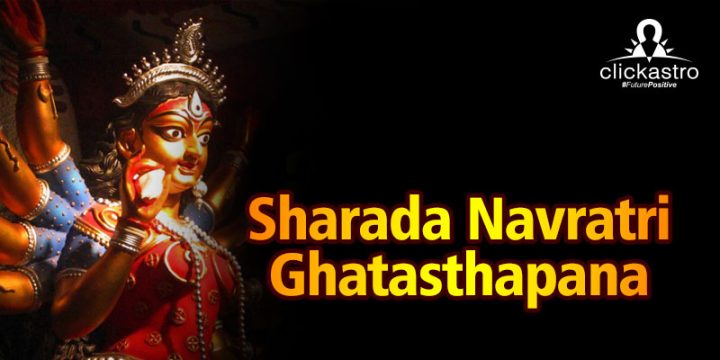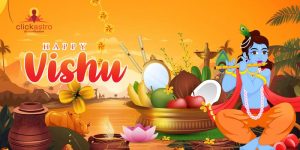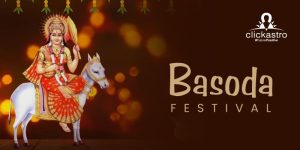Shardiya Navratri 2024
Navratri is one of the most significant
Hindu festivals which is dedicated to the worship of Goddess Durga. It is observed biannually, the first one being observed in the month of Chaitra and the second during the month of Sharada. Shardiya Navratri is held during the bright half of the month Ashvin, corresponding to September and October in the
Gregorian calendar. It is the most popular and significant of all Navratris.
It begins on
Shukla Paksha Pratipada of the Hindu month Ashwin and concludes on the 10th day with the
Dussehra (also known as Vijayadashami) festival. It is also referred to as Maha Navratri.
During Navratri, Hindus worship the nine forms or avatars of Goddess Durga which are
- Shailputri
- Brahmacharini
- Chandraghanta
- Kushmanda
- Skanda Mata
- Katyayini
- Kalaratri
- Mahagaur
- Siddhidhatri
In some regions of India, the celebrations include not just the worship of goddess Durga but also the worship of other goddesses like Saraswati and Lakshmi. Other regional deities include Ganesha, Kartikeya, Shiva, and Parvati.

The Ayudha Puja is an example of the pan-Hindu tradition observed during Navaratri that worships Goddess Saraswati, the goddess of knowledge, learning, music, and the arts. Worshippers revere peace and knowledge on Ayudha Puja which usually is observed on the ninth day of Navaratri.
On Ayudha Puja day, soldiers honour, adorn, and revere their weapons while praying to Goddess Saraswati. Musicians preserve, perform, and worship their musical instruments. Farmers, carpenters, smiths, potters, shopkeepers, and other tradespeople all decorate and worship their tools, machinery, and equipment. Students worship their books and pay respect to their teachers seeking their blessings. This tradition is especially significant in South India; however, it is also observed as in other parts of the country too.
When is Shardiya Navratri in 2024
In 2024, Shardiya Navratri will be celebrated from Thursday, 3 October 2024 to Saturday, 12 October 2024.
Here are the dates of each Navratri day and the goddess worshipped on each day.
| Navratri Day |
Weekday |
Date |
Goddess Form Worshipped |
Also Known as |
| Day 1 |
Thursday |
03-Oct |
Shailputri |
Ghatasthapana, |
| Day 2 |
Friday |
04-Oct |
Brahmacharini |
|
| Day 3 |
Saturday |
05-Oct |
Chandraghanta |
|
| Day 4 |
Sunday |
06-Oct |
Kushmanda |
|
| Day 5 |
Monday |
07-Oct |
Skandamata |
|
| Day 6 |
Tuesday |
08-Oct |
Katyayani |
|
| Day 7 |
Wednesday |
09-Oct |
Kalaratri |
Maha Saptami, |
| Day 8 |
Thursday |
10-Oct |
Mahagauri |
Durga Ashtami, |
| Day 9 |
Friday |
11-Oct |
Siddhidatri |
Navratri Parana, Maha Navami |
| Day 10 |
Saturday |
12-Oct |
|
Vijaya Dashami, Dussehra |
Colours of Navratri
White, red, royal blue, yellow, green, orange, grey, pink, purple, and peacock green are the sacred colours for Navratri. Every year, the colours to be followed during Navratri change.
Confused?
Do you want to know why?
Well, the secret of the changing colours is due to the day on which Navratri commences. The first colour of Navratri is determined by the weekday on which Navratri commences or when the Ghatasthapana or Pratipada occurs, while the rest of the 8 days follow a fixed colour cycle.
Each weekday is assigned a particular colour. They are as follows:
| Monday |
White |
| Tuesday |
Red |
| Wednesday |
Royal Blue |
| Thursday |
Yellow |
| Friday |
Green |
| Saturday |
Grey |
| Sunday |
Orange |
So, if Navratri commences on a Monday, the colours to be followed are as above. In such a scenario, Navratri will have two Mondays, two Tuesdays, and/or two Wednesdays. So, depending on the day, two to three days can arrive twice, however, there is another rule that no colour is allowed to repeat itself. Thus, for such scenarios, the colour codes will be:
Peacock Green, pink and purple or Sky Blue for the next 3 days.
The colour codes for Shardiya Navratri 2024 are as follows:
| Sr. No |
Navratri Tithi |
Date |
Weekday |
Colour |
| 1 |
Pratipada (Navratri Day 1) |
October 03, 2024 |
Thursday |
Yellow |
| 2 |
Dwitiya (Navratri Day 2) |
October 04, 2024 |
Friday |
Green |
| 3 |
Tritiya (Navratri Day 3 ) |
October 05, 2024 |
Saturday |
Grey |
| 4 |
Chaturthi (Navratri Day 4) |
October 06, 2024 |
Sunday |
Orange |
| 5 |
Panchami (Navratri Day 5) |
October 07, 2024 |
Monday |
White |
| 6 |
Shashti (Navratri Day 6) |
October 08, 2024 |
Tuesday |
Red |
| 7 |
Saptami (Navratri Day 7) |
October 09, 2024 |
Wednesday |
Royal Blue |
| 8 |
Ashtami (Navratri Day 8) |
October 10, 2024 |
Thursday |
Pink |
| 9 |
Navami (Navratri Day 9) |
October 11, 2024 |
Friday |
Purple |
More Facts about Shardiya Navratri 2024
Navratri Day 1
Date: Thursday, 3 October 2024
Tithi: Ashwin Shukla Paksha Pratipada
Favourite flower: Hibiscus
Mantra: ‘Om Devi Shailaputryai Namaha’
Navratri Day 2
Date: Friday, 4 October 2024
Tithi: Ashwin Shukla Paksha Dwitiya
Flower: Chrysanthemum flower
Mantra: ‘Om Devi Brahmacharinyai Namaha’
Navratri Day 3
Date: Saturday, 5 October 2024
Tithi: Ashwin Shukla Paksha Tritiya
Flower: Lotus
Mantra: ‘Om Devi Chandraghantayai Namaha’
Navratri Day 4
Date: Sunday, 6 October 2024
Tithi: Ashwin Shukla Paksha Chaturthi
Flower: Jasmine
Mantra: ‘Om Devi Kushmandayai Namaha’
Navratri Day 5
Date: Monday, 7 October 2024
Tithi: Ashwin Shukla Paksha Panchami
Flower: Yellow Rose
Mantra: ‘Om Devi Skandamatayai Namaha’
Navratri Day 6
Date: Tuesday, 8 October 2024
Tithi: Ashwin Shukla Paksha Shashti
Flower: Marigold
Mantra: ‘Om Devi Katyayanyai Namaha’
Navratri Day 7
Date: Wednesday, 9 October 2024
Tithi: Ashwin Shukla Paksha Saptami
Flower: Krishna Kamal
Mantra: ‘Om Devi Kalaratryai Namaha’
Navratri Day 8 – Maha Ashtami/Durga Ashtami
Date: Thursday, 10 October 2024
Tithi: Ashwin Shukla Paksha Ashtami
Flower: Jasmine
Mantra: ‘Om Devi Mahagauryai Namaha’
Navratri 9 -Maha Navami
Date: Friday, 11 October 2024
Tithi: Ashwin Shukla Paksha Navami
Flower: Champa
Mantra: ‘Om Devi Siddhidatryai Namaha’
Navratri 10 – Vijaya Dashami/Dussehra/Durga Visarjan
Date: Saturday, 12 October 2024
Tithi: Ashwin Shukla Paksha Dashami
Rituals of Navratri
In Hinduism, Navratri holds special significance; thus, devotees of Goddess Durga observe various forms of rituals during the nine days of Navratri. This is the most powerful epoch in history. Navratri commemorates the presence of the ultimate Shakti, Goddess Durga in her nine forms. Divine love pervades all worshippers who partake in the rituals and customs on this auspicious and majestic occasion. During Navratri, it is believed that these feminine divine energies generate positivity in the universe.
As Navratri reveres the power of Goddess Durga in her nine manifestations, the idols of the goddess are installed in the houses and the entire family worship the deity in accordance with the traditional Navratri rituals.
The first three days of Navratri are entirely dedicated to the worship of Goddess Durga, during which her energy and force are worshipped. Each day commemorates a different manifestation of Durga, namely Kumari, Parvati, and Kali.
The fourth and sixth days are devoted to Goddess Laxmi, while the fifth is devoted to Goddess Saraswati, also known as Lalita Panchami.
The seventh day and eighth day is devoted to Goddess Saraswati, while on the eighth day a yagna is also performed for Goddess Saraswati.
The ninth day is devoted to the Goddess Siddhidatri, followed by the grand
Dussehra Festival.
The Mythology of Navratri
The story connected with Navratri and Durga puja is narrated in the Markandeya Purana. The defeat of Mahishasura is the central mythological context to Navratri. The entire story is presented in chapters 81 to 93, referred to as Devi Mahatmyam. During Navratri, people recite this purana while worshipping the Nava Durga.
Rambha and Karambha were two brothers who practised severe penances in order to attain power. Indra was alarmed by such severe atonement and killed one of the brothers, ‘Karambha.’ This fuelled Rambha’s desire for vengeance, and he became more stringent in his penance as a result. Many Gods were impressed by his worship, and they bestowed upon him the boon of being extremely powerful and unbeatable by anyone, neither Gods nor demons.
Rambha once fell in love with and procreated with a female buffalo. During this time, a male buffalo entered and set his eyes on the female buffalo. As Rambha’s boon had not included death by animal, the male buffalo was able to kill Rambha.
The female buffalo was impregnated by the copulation with Rambha. She gave birth to an attractive calf. But heartbroken at her husband’s death she committed suicide by jumping into the fire. From the fire a half-buffalo, half-human ‘Mahishasura’ emerged.
The gods and demons were all defeated by Mahishasura. He attacked and conquered heaven, enslaving the devas/gods and declared himself to be Indra, the gods’ lord. The gods, therefore, led by Brahma, requested Vishnu and Shiva to assess the situation and sought the end of Mahishasura.
The destructive Mahishasura wreaked mayhem and instilled great rage in the Hindu trinity. The Trimurti then combined their energies to form Nava Durga, the pinnacle of power. Every God then accorded all of their distinctive weapons on the new feminine power. Shiva gave the trident, Vishnu his discus, Varuna his conch, Agni gave his spear, Yama gave his cudgel, Vayu bestowed the bow, Surya his arrows, Indra’s Vajra, Kubera gave his mace, Brahma bestowed the water pot, Kaala his sword and Vishwakarma his axe. Lord Himavan bestowed the mountain lion as the vehicle of Durga.
Seeing the magnificent goddess, Mahishasura fell in love with her and proposed marriage to her; however, the goddess had a condition. She agreed to marry Mahishasura on the condition that he should defeat her. Thus ensued a severe battle which lasted 9 days after which Goddess Durga assumed the form of Chandika and pinned Mahishasura under her foot and pierced him with the spear and cut off his head with her sword.
To know more about the significance and story of each Navratri day, read on by clicking on the links below.
 The Ayudha Puja is an example of the pan-Hindu tradition observed during Navaratri that worships Goddess Saraswati, the goddess of knowledge, learning, music, and the arts. Worshippers revere peace and knowledge on Ayudha Puja which usually is observed on the ninth day of Navaratri.
On Ayudha Puja day, soldiers honour, adorn, and revere their weapons while praying to Goddess Saraswati. Musicians preserve, perform, and worship their musical instruments. Farmers, carpenters, smiths, potters, shopkeepers, and other tradespeople all decorate and worship their tools, machinery, and equipment. Students worship their books and pay respect to their teachers seeking their blessings. This tradition is especially significant in South India; however, it is also observed as in other parts of the country too.
The Ayudha Puja is an example of the pan-Hindu tradition observed during Navaratri that worships Goddess Saraswati, the goddess of knowledge, learning, music, and the arts. Worshippers revere peace and knowledge on Ayudha Puja which usually is observed on the ninth day of Navaratri.
On Ayudha Puja day, soldiers honour, adorn, and revere their weapons while praying to Goddess Saraswati. Musicians preserve, perform, and worship their musical instruments. Farmers, carpenters, smiths, potters, shopkeepers, and other tradespeople all decorate and worship their tools, machinery, and equipment. Students worship their books and pay respect to their teachers seeking their blessings. This tradition is especially significant in South India; however, it is also observed as in other parts of the country too.








very amazed to read these names! very curious of the character of those born in specific years! does it apply to everyone in that year? I am finding it fascinating to learn how the year affects personality! would like to know more. please share how to identify these traits.
Very good knowledge, helpful me to decide right sleeping position.
Nice explain !!
Thank you
Could you please tell me my lucky number